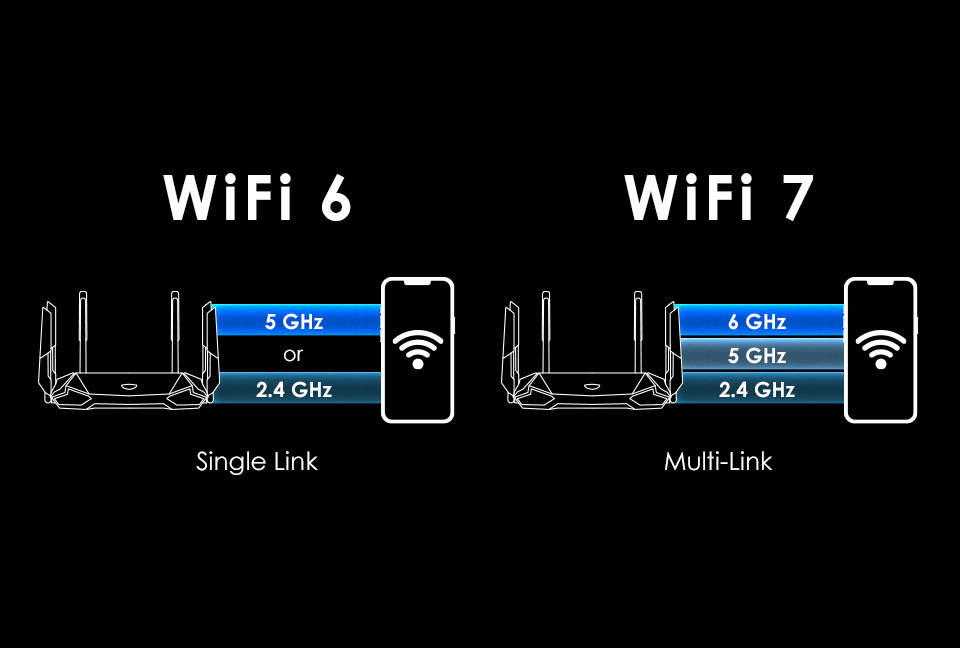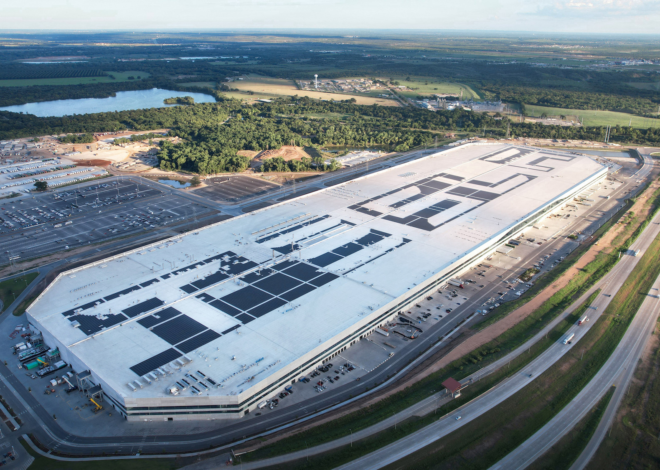
What is Wi-Fi 7 — is it necessary?
The next generation of Wi-Fi is here, and yes, it’s better than Wi-Fi 6E, but there’s very little reason to go router shopping just yet.
It’s time to prepare your web browsers, folks because Wi-Fi is on the verge of another significant upgrade. Yes, roughly four years after the introduction of Wi-Fi 6 and two years after the debut of Wi-Fi 6E, we’re now transitioning to Wi-Fi 7. As someone who initially began their career by reviewing routers, I must admit I’m feeling quite exhausted by these rapid advancements.
In all seriousness, Wi-Fi 7 has the potential to deliver an even more substantial speed boost compared to Wi-Fi 6E. This is partly due to the expansive 6GHz band that was unlocked by Wi-Fi 6E, offering greater possibilities for improvement. Wi-Fi 7 is also expected to employ innovative techniques to enhance speed, reduce interference, and minimize network latency.
You might find these features familiar because the headline-grabbing aspects of both Wi-Fi 6 and Wi-Fi 6E have revolved around their impressive interference mitigation capabilities. Additionally, Wi-Fi 6E, in particular, has been celebrated for its increased speed, assuming you possess a compatible device.

If you’re not thrilled about the prospect of replacing all your devices just to achieve a more reliable network, here’s the reassuring part: Wi-Fi 7 remains compatible with your older equipment. As you gradually update your smartphones, computers, and other wireless devices with ones that support this new standard, you can expect significant improvements in certain aspects. Whether you should invest in a Wi-Fi 7 router right away or wait is a different question worth considering.
Also Read | OpenAI Finally Allows ChatGPT Complete Internet Access
What is Wi-Fi 7?
You can draw a parallel between Wi-Fi 7 and Wi-Fi 6E, much like the relationship between Wi-Fi 6 and Wi-Fi 5. Wi-Fi 7 continues to operate across the 2.4GHz, 5GHz, and 6GHz bands, similar to Wi-Fi 6E. However, it distinguishes itself by offering more potential bandwidth, translating to faster downloads, bundling connections across multiple bands for quicker downloads and enhanced stability, and employing advanced signal modulation techniques to address network congestion.
While a significant part of Wi-Fi 7’s marketing revolves around its potential to support 8K video, there’s some skepticism here. Even if 8K streaming were to become widespread, most modern routers should have no trouble handling a compressed 8K feed due to its relatively lean data requirements.
The most immediate benefit of Wi-Fi 7 is actually raw speed.
Also Read | Will Robots Take over the World one day?
Is Wi-Fi 7 actually faster?
Indeed, Wi-Fi 7 is poised to significantly boost wireless speeds. According to Intel, a “typical” Wi-Fi 7 laptop has the potential to reach a maximum speed of nearly 5.8Gbps, although this is a theoretical figure. Even achieving half of that speed would be more than extravagant for most users.
The key to this enhanced speed lies in channel bandwidth, essentially the size of the data pipeline. Wi-Fi 7 doubles the maximum channel bandwidth to 320MHz, in contrast to the 160MHz available on more advanced Wi-Fi 5, 6, and 6E routers. It’s akin to having a wider pipeline that can accommodate more data. However, it’s important to note that these larger channels are only supported on the 6GHz band, as there isn’t sufficient space on the 5GHz band.
Wi-Fi 7 introduces Multi-Link Operation (MLO), a feature that allows you to combine bands into a single connection. As a simple illustration, if you can download a file at 1Gbps on the 6GHz band and 700Mbps on the 5GHz band, combining the two could potentially result in speeds of up to 1.7Gbps. This also provides redundancy, so if one of these connections fails for any reason, your device can seamlessly switch to the other one. The practical effectiveness of MLO will become clearer when Wi-Fi 7 routers and devices are tested together.
Wi-Fi 7 doubles the number of MU-MIMO spatial streams, facilitating simultaneous communication with other devices. While Wi-Fi 6 supports 8 x 8 MU-MIMO (meaning a router with eight antennas can communicate with eight devices simultaneously), Wi-Fi 7 elevates this to 16 x 16. However, it’s essential to temper expectations, as most consumer-grade Wi-Fi 6E routers, including premium models like Netgear’s Nighthawk RAXE500, typically offer only 4 x 4 MU-MIMO. It’s also challenging to find phones, laptops, and other Wi-Fi-enabled devices that surpass 2 x 2 MU-MIMO capabilities.
Also Read | Meta AI Assistant and Facebook-Streaming Glasses Revealed
Is Wi-Fi 7 reliable for my smart home?
The evolution of the smart home has undoubtedly brought improvements over the years, but it’s still common to experience sluggish or unresponsive devices in a congested wireless environment. The Wi-Fi 7 specification incorporates features that may address these issues in the future.
One of the significant bottlenecks in wireless communication is the allocation of airtime. When a router is occupied with communication with one or more devices, other devices waiting for their turn must delay their data transmission. While these delays occur in fractions of a second, they can accumulate when numerous devices vie for attention. This is a common reason for smart home devices to appear sluggish.
Wi-Fi 7 attempts to mitigate this issue by employing a technique known as Orthogonal Frequency Division Multiple Access (OFDMA) to pack additional data into a carrier wave. Wi-Fi 6E also utilizes this approach, but interference can hinder it from utilizing the full capacity of the wave, even when the interference occupies only a small portion of it. Wi-Fi 7 takes a different approach by essentially bypassing the interference and transmitting the remaining data through unoccupied channels, like a river flowing around a rock and rejoining on the other side.
It’s important to note that OFDMA is not backward-compatible with older devices. When a Wi-Fi 7 router encounters a smart home device that only supports, say, Wi-Fi 4, it communicates with that device based on the capabilities of the older standard, forcing all other devices to wait in line. So, while Wi-Fi 7 has the potential to improve the performance of your smart home, these benefits will only materialize once you’ve transitioned all your devices to the new standard—unless a different standard, like Matter-over-Thread, becomes the dominant choice.
Also Read | The Advertising Evolution: Big advertisers shift to AI (AI in Advertising)
What else will Wi-Fi 7 be good for?
Mesh Wi-Fi systems have proven to be an excellent solution for achieving comprehensive Wi-Fi coverage in homes. However, they currently rely on single wireless connections for backhaul, which is the connection between mesh nodes. When the frequency band used for this backhaul becomes congested, it can prompt the router to switch to another band, resulting in a potential impact on throughput as the system rebuilds its backhaul connection. According to information found on Asus’ website, a Wi-Fi 7 mesh system, with the help of Multi-Link Operation (MLO), will have the ability to seamlessly switch between bands, eliminating apparent connection interruptions.
Thanks to MLO and Orthogonal Frequency Division Multiple Access (OFDMA) in Wi-Fi 7, you can expect reduced lag on your network. The capacity to simultaneously connect to multiple bands, combined with advanced signal modulation techniques, may lead to fewer instances of your devices waiting in line for other requests to be processed on your network. This should result in a smoother and more responsive network experience.
When will I get Wi-Fi 7 on my devices?
It’s worth noting that Wi-Fi 7 routers are available for purchase at the moment. However, it’s advisable not to rush into buying one just yet, primarily because only a limited number of devices currently support this standard, which hasn’t even been officially finalized.
The good news is that Wi-Fi 7 chips are already in existence. Qualcomm’s FastConnect 7800 mobile wireless chipset, released in 2022, is already integrated into some phones, such as the Samsung Galaxy S23 Ultra. Although, for these phones to support Wi-Fi 7, Samsung would need to enable the functionality.
Wi-Fi 7 compatibility can also be found in the 16-inch Acer Swift Edge laptop, and Intel’s BE200 Wi-Fi 7 network card is expected to hit the market before the end of 2023. Furthermore, other major manufacturers are likely to release computers supporting the Wi-Fi 7 standard throughout the upcoming year. So, while Wi-Fi 7 is on the horizon, it’s sensible to wait until a broader range of compatible devices is available before making the switch.
Also Read | The Future of Motherboards: ASUS Introduces Next-Gen Designs for Intel 14th-Gen Processors
The caveats
These are indeed the early days for Wi-Fi 7, and most of its advantages may not become readily apparent until manufacturers make it their default standard, which could take some time. Currently, you can still find many products that top out at Wi-Fi 5. Unless you’re an enthusiast who absolutely wants to stay on the cutting edge of technology, there aren’t many practical reasons to immediately adopt the new standard with a new router.
This is especially true because, as of the time of writing, the Wi-Fi 7 standard has not been formally adopted by the Institute of Electrical and Electronics Engineers (IEEE). Routers available before IEEE adoption may lack key features or optimizations. Some features, such as the doubled channel width, offer concrete and well-understood benefits, while others, like Multi-Link Operation (MLO), show promise but haven’t undergone extensive independent testing.
Lastly, the initial routers to support Wi-Fi 7 are expected to be some of the most expensive ever released. For instance, the Eero Max 7 mesh system is projected to cost just under $1,700 for a three-pack when it becomes available. Therefore, it might be wise for most users to wait until the technology becomes more mainstream, affordable, and thoroughly tested before considering an upgrade to Wi-Fi 7.
So should I buy a Wi-Fi 7 router now or wait?
If you’re counting on Wi-Fi 7 to revolutionize your entire network, it’s best to exercise patience. Given the incomplete nature of the specification and the limited number of devices currently supporting it, you won’t experience the full benefits for quite some time, possibly months or even years.
Also Read | Using two WhatsApp accounts at the same time is now possible
Key Wi-Fi 7 Features Summary
- User Experience Data Rate
- Spectrum Efficiency
- Network Energy Efficiency
- Connection Density
- Peak Data Rate
- Cost Effective
- Area Capacity
- Low Latency
Another careful course of action is to wait until the Wi-Fi 7 specification is finalized and the Wi-Fi Alliance begins certifying Wi-Fi 7 routers. This certification ensures that the routers are fully compliant with the completed standard. Until this happens, Wi-Fi 7 routers are likely to be relatively expensive, and the pool of wireless devices that can take full advantage of their advanced features will be too small to justify the cost. Therefore, it’s advisable to wait for a more mature and cost-effective Wi-Fi 7 ecosystem before considering an upgrade.













